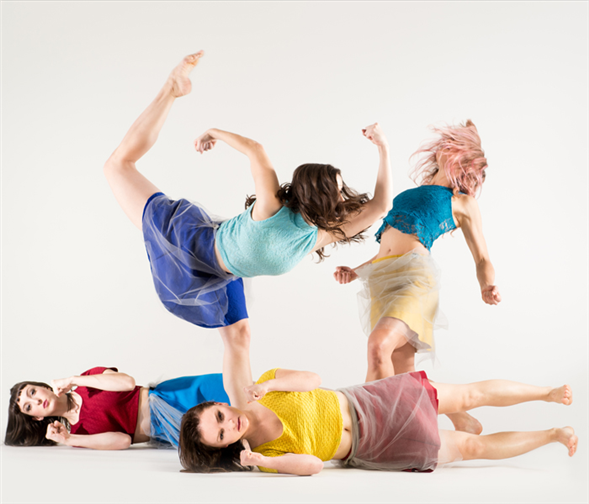In a new home, Triskelion Arts helps keep scrappy dance alive---
In 2000, five young dancers rented a loft on a mostly-deserted street in a still-questionable Brooklyn neighborhood called Williamsburg. They toiled to make
Triskelion Arts, the new space, a home not only for their own choreographic endeavors, but also a center for artists searching for affordable rehearsal and performance rooms.
In that last era before internet saturation, colorful posters advertised the space around the barely-buzzing industrial blocks. A hopeful nucleus soon grew into a warm workplace for many dancemakers.
And now, 15 years after opening, as Starbucks makes its long-feared appearance and expensive high-rises claim those once warehoused streets, the artsy, "other" vibe of Williamsburg is gone. And so is Triskelion Arts.
Fortunately for dance lovers, it's just moved to better digs, in the still (to some degree) unique Greenpoint area of Brooklyn. "When Williamsburg originally started to gentrify, I thought, 'This will be great,'" says Abby Bender, the company's artistic director and one of the original founders. (The troupe now has three full-time employees.) "I thought it would be an artsy neighborhood, where audiences would come to see us. That didn't prove to be the case. Our rent skyrocketed, and the environment became unwelcoming."
At their new home for just over a month, Triskelion Arts is enjoying a first floor, corner space, and Bender feels the choreographic community appreciates the upgraded environment. "In our old space, for example, the heat often wasn't turned on: Artists will not make their best work when uncomfortable," she says. "So now, it's a different feeling of safety and comfort that leads to good work."
Triskelion Arts has stayed true to its original goal of offering affordable options, maintaining its tradition of keeping participation in their programming free of charge, where other presenters often require an entrance or application fee. Another holdover is Split Bill, a popular program that lets emerging artists present full-length pieces of about 40 minutes. Two companies perform each evening, which not only gives the festival its name but also allows audiences to experience a broad array of work in a single night.
The latest iteration of Split Bill runs from April 16 – 19, with an eclectic mix of artists. The line-up includes The Moving Architects'
Demure, a work for five women portraying Biblical heroines; a piece from Amy Cova Dance about food, sex and medicine women; two solo shows about vulnerability from BOOMERANG/Double-Edge Dance; and UNA Projects'
Ships, a collection of solos, duets, and ensemble dances that explore being alone.
The program's mix of style, process, size, and structure has always been a key priority for Bender, and she maintains it through a unique approach. "Split Bill is curated and adjudicated in a different way than our regular season, where we invite artists," she explains. "We have a panel of judges, from board members to staff and other artists, who look at applications, including work samples, bios, websites, and – key in my mind -- a description of the piece. I am interested in how much thought the artist will put into that and the clarity of their idea: If they're not invested, I'm not willing to invest in them. I'm also a huge fan of diversity, with sophistication as a throughline."
Meanwhile, the program will no doubt benefit from the company's new home. "You don't have to go up six flights and smell shoe chemicals," Bender laughs. "Our artists deserve more recognition, and now, people are paying attention, just like these choreographers have earned."
---
Lauren Kay, a writer and dancer, is a long-time contributor to TDF Stages
Top photo: Dancers in Demure from Moving Architects. Photo by Rachel Neville. UNA Projects photo by Catherine Ellis Kirk.
